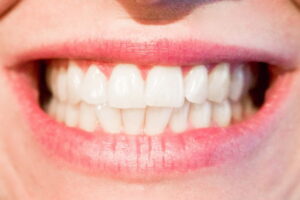Porcelain and composite dental veneers can instantly rejuvenate the look of your teeth by adding a thin layer over the front part of the tooth, but there are a few different options available and sometimes it can be hard to decide which is best.
What are veneers and how are they done?

First, the surface of the tooth is prepared by applying a chemical to make it rough and ensure the veneers stick properly – like preparing a smooth surface like glass or concrete for paint. The color of the veneer is chosen to match your other teeth so the veneered tooth doesn’t appear out of place.
For composite veneers, a composite resin is then applied to the tooth layer by layer and a bright light is used to dry each layer. When the last layer has been applied and hardened, your cosmetic dentist will polish the surface and shape it to suit your other teeth and smile.
Benefits of Composite Veneers
Composite veneers are a popular alternative to porcelain because they tend to be stronger overall. Composite resin resists chipping and cracking, so people who are worried about strength issues tend to opt for composite. Composite is also generally a lot more affordable than porcelain, so they’re good for people who want to rejuvenate their smiles without going outside of their budgets. Last but not least, the process of installing composites tends to be faster and require fewer visits than porcelain veneers.
The procedure for a porcelain veneer is slightly different. Your dentist may use a local anesthetic, or freezing to ensure you don’t feel pain and a thin layer of enamel is removed for your tooth to make room for the veneer. Then a mold is made of the tooth, and a specialized lab makes a custom-made, perfectly matching porcelain veneer.
In the meantime a temporary veneer is used to replace the portion of the tooth that was removed. These temporary veneers are very fragile and extra care should be taken when eating and cleaning as they can come loose easily.
Benefits of Porcelain Veneers
The main reason porcelain veneers are so popular is the incredibly natural look they offer the wearer. Porcelain bears a very close resemblance to natural tooth enamel, so they’re very hard to detect once installed. They also blend better with surrounding teeth, so porcelain is a good option for people only looking to have a couple of teeth veneered. The results are often a lot more predictable as well, so if you’re looking for reliable results that will definitely deliver, porcelain could well be the right choice for you. Lastly, porcelain is incredibly stain resistant, so people who are worried about yellowing or stain damage may want to go this route as well.
How Long Will My Veneers Last?
Most veneers last on average between 10 and 15 years, so they’re definitely a good long-term solution. However, it’s very important to remember that this lifespan is guaranteed only with proper care. Treat your veneers with the same care you would your natural teeth. Brush and floss daily, as well as keep your regular appointments with your dentist. This is the case regardless of whether you choose composite veneers or opt for the more expensive porcelain option.
Dr Jones is a specialist in high quality veneers and will be able to give you more information about which type of veneer is the best bet for you.

